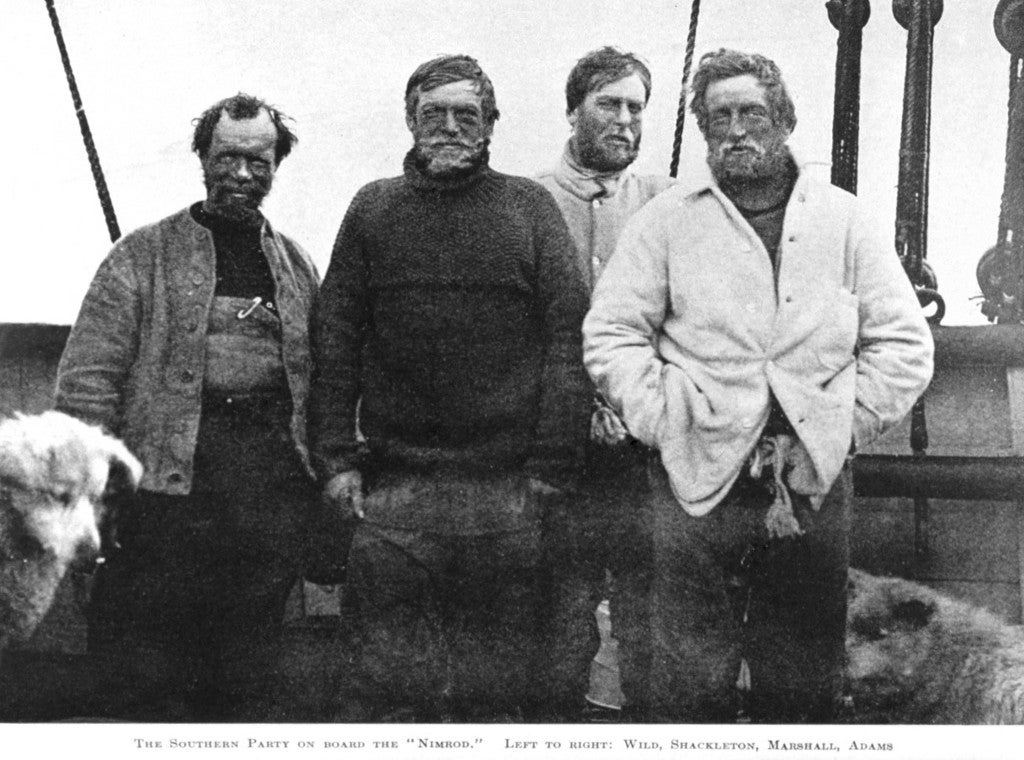According to a new study, dominant men simply make faster decisions—and their brains show it.
We’re told often about the superhuman decision-making power of CEOs and leaders, who can stare down a complex, thorny problem and make a call. While most of us can’t relate to the decisions required to turn around a sinking company, perhaps it’s easier to imagine turning around a sinking ship—literally.
Consider the 1914 voyage of Ernest Shackleton, an explorer who sailed out of London with a 28-man crew looking to traverse Antartica by foot via the South Pole. They met trouble instead: The ship got stuck in the ice and had to be abandoned.
But the quick, constant series of decisions Shackleton made now amount to a master class in choosing. So much so that Harvard Business School professor and historian Nancy Koehn teaches the Shackleton Expedition case every year as demonstration of exceptional leadership in crisis.
The men survived in igloos, eating penguin giblets and seal blubber and keeping up their daily chores, until they ran out of supplies, eventually carving up all the dogs. When the ice finally broke up, they hit the ocean, maneuvering three lifeboats for 16 days until they hit Elephant Island. But it was the wrong island, with no inhabitants, so they spent another 14 days crossing the cruel seas en route to South Georgia Island in search of a whaling station. They never made it Antartica, but all 28 men survived. (They’re still looking for his lost ship.)
In other words, in spite of failing massively, Shackleton’s exemplary ability to abandon one course and make new triage-level decisions about the new one saved their lives. He seemed to understand this was exactly the point. “A man must shape himself to a new mark directly the old one goes to ground,” he wrote in his diary of the decision.

Generally, we’re operating on two things when we make any decision: a gut feeling, and a more methodical information-based deliberation. You should run your feelings and instincts through the paces, to be sure, but too much processing can quickly hit a point of diminishing returns and lead to paralysis.
Anticipating the worst is also an invaluable skill in making choices, but only to a point, too. Tim Ferriss calls it “fear-setting,” but it’s really just imagining every way things can go off the rails and coming up with some sort of work-through if they do. In one study of students who’d taken the LSAT for law school, those who worried the most about the outcome of the test were better prepared for failing, for instance, because they now had a plan in place for an alternate course.
Simply choosing quickly is also important, even if you’re wrong. The best CEOs, we’re told, are better at making decisions. But contrary to popular belief, they aren’t better at making the perfect call, they’re just more decisive in general. They believe that even a bad choice is sometimes better than no choice, particularly when direction is sorely needed.
And they’re able to make a call even without all the information, or when things seem uncertain. Decision-making expert Rita McGrath calls it knowing the difference between being “roughly right” as opposed to being “not at all right.” And being fast and roughly right, she argues, is better than being precise but slow.
Amazon’s Jeff Bezos has famously said, for instance, that you should make a choice when you have 70 percent of the information you wish you had. “If you wait for 90 percent, in most cases, you’re probably being slow,” he said. In his estimation, making decisions more quickly based on what you know at the time rather than waiting until you have all the information means you’re more likely to be able to reverse course and fix a bad decision quickly.
You should also be comfortable with being wrong. In some estimations, as much as 25 percent of the time. Even Shackleton was wrong.

Koehn, who teaches the Shackleton course, says many students note that he made plenty of mistakes. He was warned to wait out abnormally thick ice and delay his trip, for instance, but he was too impatient.
But Koehn has to reiterate that it’s not possible to avoid mistakes as a leader. The test of mettle is in the ability to redirect. In Shackleton’s case, the second he realized the ship was lost and the men were screwed, he focused completely on surviving — not just maintaining food and water, but also morale. He insisted they keep up their daily routines, hunting and specimen collecting, including nightly socializing. He had the foresight to save a crew member’s banjo, knowing they’d need entertainment to keep up morale.
Koehn calls it running a split-screen in your head: holding the big details next to the small ones, always aware of how many people are waiting on your decision to move forward.
While the Shackleton case is extreme — most of us won’t be stranded on ice for two years — it’s illustrative of how any decisions are made, big or small: by balancing gut with facts, and forests with trees.

